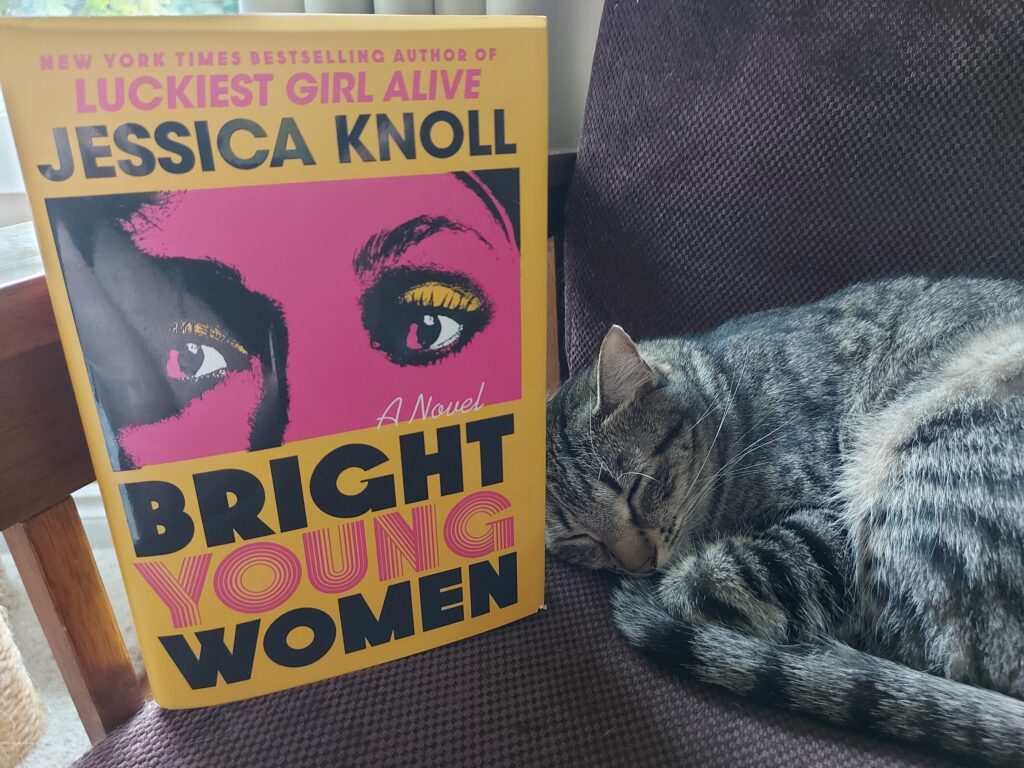Bright Young Women by Jessica Knoll

Jessica Knoll’s Bright Young Women is a big eff you to society’s weird fixation with serial killers. It takes its inspiration from the victims of a certain American serial killer who has been the subject of numerous documentaries, films, podcasts and television series. The fictionalized version of this serial killer is never named in Knoll’s novel (he is referred to throughout as The Defendant), and for good reason, because his name is not worth knowing and he is not worthy of the attention he received in life and continues to receive in death. Bright Young Women turns the attention given to The Defendant back on the women that it should have been focused on in the first place. It is a well written, quietly devastating read that examines the issues that women face without railing against them.
In 1978, Pamela Schumacher, president of her sorority at Florida State University’s Tallahassee, awakens at three a.m. to a strange sound. While investigating the noise, she witnesses a man leaving her sorority house. Initially, she thinks it is the boyfriend of her best friend, Denise, but she realizes that it is a stranger. She goes to check on her sorority sisters and discovers that four of them have been attacked in their beds, including Denise. Denise and one other sister die, and the other two sisters are horribly wounded. When questioned by the police, Pamela makes the mistake of telling them that she initially thought the strange man in the house was Denise’s boyfriend, and that is what the police become fixated on, refusing to listen to her when she insists that the killer was someone else.
Days later, Pamela meets Tina Cannon, who shows her a wanted poster of an escaped convict from Colorado. Pamela immediately recognizes The Defendant, but with the Tallahassee police still not interested in listening to her, Pamela teams up with Tina to find the evidence linking The Defendant to Denise’s murder, and the evidence linking The Defendant to the disappearance of Tina’s friend, Ruth Wachowsky, from the Seattle area.
Bright Young Women is told from the perspectives of two very different women. The first is Pamela, who narrates the events of 1978 from 2021. She is an intelligent and driven woman who is planning on going to law school. Pamela’s contempt for The Defendant underlies her narration, and for good reason. The Defendant was not some brilliant man who happened to kill women, he was an opportunist. The only reason he was able to escape prison in Colorado and continue to murder more women was because of the ineptitude of the police. If The Defendant was alive today, we would call him an incel. He was certainly a misogynist, just like the law enforcement that does not take crime against women seriously. Pamela evolves from being a people-pleasing person who feels an obligation to massage the male ego to a head-strong woman who can look a serial killer in the eye with anger and loathing because of all the lives he stole.
The other perspective in Bright Young Women is Ruth’s from 1974, and it is not a spoiler to say that Ruth dies, no matter how much you hope she gets a better ending. Ruth’s story is a goddamn tragedy. She goes from being a self-loathing woman who lives under her cruel mother’s thumb to finding freedom and literally blossoming into a beautiful woman before The Defendant cruelly takes her life away. While reading this novel, it kept hitting me over and over again like a fist to the heart that The Defendant’s victims were once living, breathing people who had their own hopes for the future, but they never got to have a future. They never got to experience the last fifty or so years of history. They never got to experience the internet, or smartphones, or social media or streaming services. Instead, they have each become a footnote in the life of The Defendant. Bright Young Women tells us it is time to reclaim their narratives and give their lives the respect that they deserve.